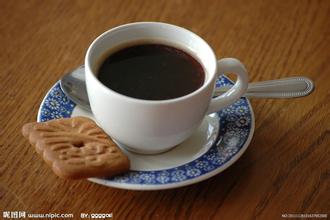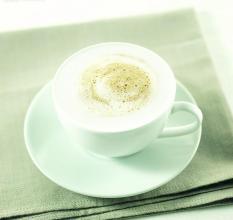Variety types in the growth process of coffee trees
Native to Brazil, it is another hybrid tree species; somewhere between CATURRA and MUDO NOVO. The tree is usually low in shape, but slightly taller than CATURRA and easy to harvest, and the coffee fruit begins to bear fruit in late summer. It has more sour taste, and a good sour taste, like lemons and oranges, makes you secrete salivary acid, which is the characteristic of high-quality ARABICA coffee beans usually produced at high altitude and high density. Its good sour taste will not upset your stomach, but can provide a function to clear the taste and boost the mind. Professional coffee connoisseurs appreciate the medium to deep roasting performance of CATUAI. It releases strong tobacco aroma and fresh, lively sour taste, coupled with a thick, thick fat (CREAMA), is the best lover who prefers "espresso"! This variety is very popular in Japan.
CATURRA [Katula] was first found in Brazil and is also the result of hybridization with BORBON. Its plant is short and compact, so it has more shade, forming a good windproof effect, so that its flowers are not easy to be blown down by the wind, and bear more fruit. CATURRA tastes like BORBON (American whisky) with a thick soup-like feel and a deep syrup-like ultra-high fat, creamy mouthfeel. Medium acidity, with slightly acidic and sweet dark chocolate finish in medium and deep roasting, is an unforgettable espresso. PACAMARA was first found in El Salvador (Central America). It continues to develop because of its suitable natural environment and good planting under the loose soil of volcanic ash. It is famous for its extra-large bean shape and clear and pure taste. Overall: PACAMARA is a multi-flavor, rich coffee bean. Elegant soft and sour taste, with berry-like fruit aromas throughout, with a pleasant and satisfying taste in the finish. PACAMARA is one of the hybrids of BORBON, so it has the soft and sweet characteristics of BORBON. In the performance of medium baking, there is a bold but sour, bitter taste to achieve a balanced state, and has a nutty taste, in deep baking, there is a dark chocolate flavor!
BORBON originated from La Reunion, a small island near Europe-Mozambique. It is adjacent to Madagascar, commonly known as Spice Island. Because BORBON tree is sensitive to insects and bacteria, it is a vulnerable tree species, but its yield is high, so it needs special care. It is more suitable for planting in high-latitude mountain areas, but it is not easy to resist diseases when planting on lowland. Because of this, when the tree type is wide-spreading (outward extension), the plant spacing is wider, so more land space is needed to achieve yield. BORBON coffee beans have a very smooth appearance and good appearance, with a very high-quality coffee quality and taste balance, is the perfect combination of all kinds of coffee! The overall texture is pleasant and charming; it can make a cup of coffee give off a lingering aftertaste, which is most suitable for a person to carefully taste it alone, and is as famous as its American famous BORBON whisky for its smoothness, smoothness and sweetness.
Arabica bean coffee trees can be divided into two main varieties: Arabica (Coffea Arabica) and Robusta (Coffea Robusta/Coffea Canephora). In addition, there are some minor species, such as Coffea Liberica and Coffea Arabusta, but they are rare on the market.
Robusta beans Robusta coffee trees can grow on flat land, it has a strong resistance to disease, and the yield is higher. Compared with Arabica beans, Robusta beans are more round in appearance, with a slightly inflated side with cracks in the middle, and straight grooves reminiscent of soybeans, while Arabica beans are oval and zigzag, a bit like half a peanut.
Generally speaking, Robusta beans are poor in taste, have 2 to 3 times the caffeine content of Arabica beans, and are cheap, mostly for the large coffee industry to produce instant coffee or low-cost comprehensive products. Arabica coffee trees are suitable for growing on fertile hillsides with good drainage at an altitude of about 1,000 to 2,000 meters. The climate should not be too humid, but they still need a continuous rainy season and abundant rainfall.
During the day, they like mild but not very hot temperatures and less than two hours of direct sunshine, so if they lack the afternoon showers or thick fog to report every day, local farmers have to plant many taller trees in the coffee garden for shade. At night, they want an environment of about 10 degrees Celsius, but the temperature should not be too low, because too warm will make the coffee berries grow too fast to produce small, strong, hard and high-quality coffee beans. If it is too cold to frost, the coffee trees will freeze to death.
Based on these characteristics, the promised land suitable for Arabica coffee growth is mostly located in countries with alpine terrain between the Tropic of Cancer and the Tropic of Cancer, which is also known as the coffee belt (Coffee Zone/Coffee belt).
At present, coffee, as an elegant, fashionable and high-grade beverage, has long been popular all over the world, and has been listed as the first of the three major beverages (coffee, tea and cocoa) in the world. Coffee is also grown in 76 countries and regions all over the world. In 1983-1984 alone, the world's coffee output reached 5.5 million tons, with exports of 4.2 million tons. Among them, Brazil in South America, known as the "coffee kingdom", has the largest production and export volume. In spite of this, the hometown of coffee is not in Brazil, but in Ethiopia in Africa. To this day, there is still a large area of wild coffee forest in the dense jungle of the southwestern province of Cafa. The word "coffee" comes from the place name "Kafa".

Important Notice :
前街咖啡 FrontStreet Coffee has moved to new addredd:
FrontStreet Coffee Address: 315,Donghua East Road,GuangZhou
Tel:020 38364473
- Prev

Introduction to the taste and taste of coffee beans
Although Yirgacheffe coffee is petite, it is gentle and delicate, sweet and lovely. As the hometown of coffee, thousands of years of planting history and processing tradition in Ethiopia have created high-quality washed Arabica beans. Light baking has unique sweet aromas of lemon, flowers and honey, soft acidity and citrus flavors, fresh and bright on the palate. No milk, no sugar.
- Next

The Historical and Cultural Origin of the planting method of Coffee Tree
Coffee Tree-planting History there are many legends about the discovery of coffee. There is a legend that in the 13th century, there was a prince in Ethiopia who found that his camel loved to eat small oars on a bush, and he was so excited and energetic after eating it. So he also picked some small berries to taste, and finally discovered this refreshing coffee drink. Another legend is that
Related
- Detailed explanation of Jadeite planting Land in Panamanian Jadeite Manor introduction to the grading system of Jadeite competitive bidding, Red bid, Green bid and Rose Summer
- Story of Coffee planting in Brenka region of Costa Rica Stonehenge Manor anaerobic heavy honey treatment of flavor mouth
- What's on the barrel of Blue Mountain Coffee beans?
- Can American coffee also pull flowers? How to use hot American style to pull out a good-looking pattern?
- Can you make a cold extract with coffee beans? What is the right proportion for cold-extracted coffee formula?
- Indonesian PWN Gold Mandrine Coffee Origin Features Flavor How to Chong? Mandolin coffee is American.
- A brief introduction to the flavor characteristics of Brazilian yellow bourbon coffee beans
- What is the effect of different water quality on the flavor of cold-extracted coffee? What kind of water is best for brewing coffee?
- Why do you think of Rose Summer whenever you mention Panamanian coffee?
- Introduction to the characteristics of authentic blue mountain coffee bean producing areas? What is the CIB Coffee Authority in Jamaica?

